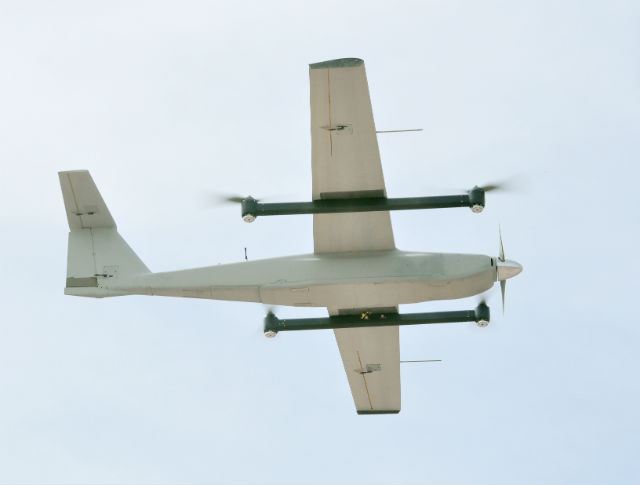California-based unmanned air vehicle manufacturer Arcturus has unveiled quadrotor-equipped variants of its T-series aircraft, which offer vertical take-off and landing capabilities while maintaining fixed-wing flight characteristics.
The Jump 15 and Jump 20 both feature battery-powered rotor assemblies mounted fore and aft of each wing, attached to their undersides via a pair of booms that also house the powerpacks.
Key to the development was shedding weight from the airframe to offset the additional mass of the quadrotors, says Arcturus president D’Milo Hallerberg.
As the T-16 and T-20 UAVs on which the Jump-series vehicles are based are designed to “endure the rigours” of high-g catapult launches – and similarly stressful belly landings – material was able to be removed from the airframe, says Hallerberg, “because with Jump you don’t have the same kinds of stresses”.

Arcturus
Additionally, the company analysed all the components used – down to the wiring harnesses and propeller hubs – “to make sure every single ounce was taken out”.
Overall, the weight-saving efforts led to a reduction of around 15-20% from the airframe, says Hallerberg, with the Jump-series' overall weight “on a par” with the fixed-wing models. The additional drag from the rotors leads to a slight reduction in endurance, however, falling from 10-12h to around 6-8h with a standard electro-optical/infrared sensor payload.
First flight using a T-15-based prototype was performed earlier this year in Arizona lasting 20min. The UAV took off, transitioned to forward flight using its four-stroke mogas-powered engine and then landed, all performed autonomously.
A launch customer has already been secured, but Hallerberg declines to provide further details, save to say it is “not a commercial operator”.
Military certification is expected to take around a year, with the company also planning to qualify the Jump aircraft for ship-borne operations.
Source: FlightGlobal.com



















